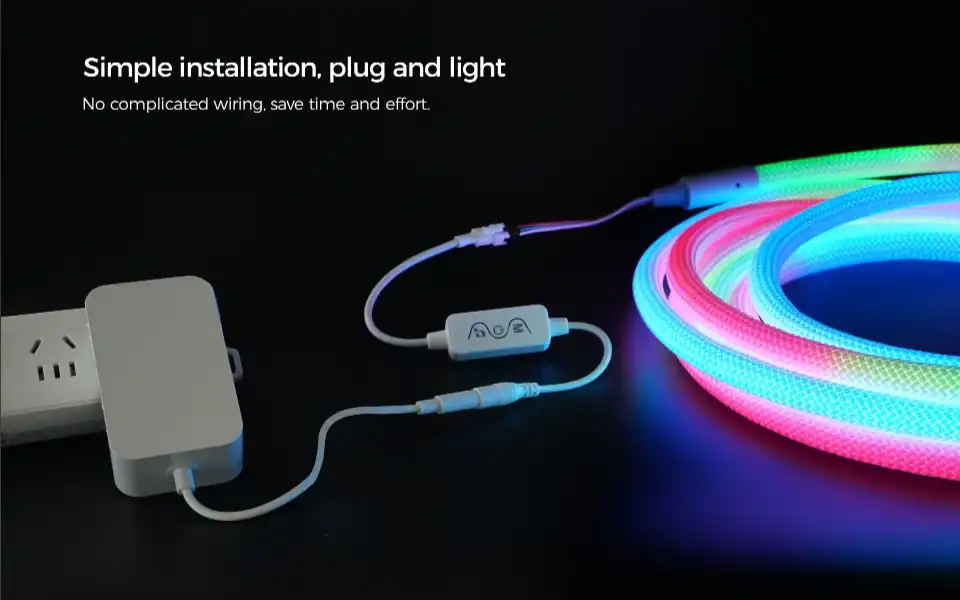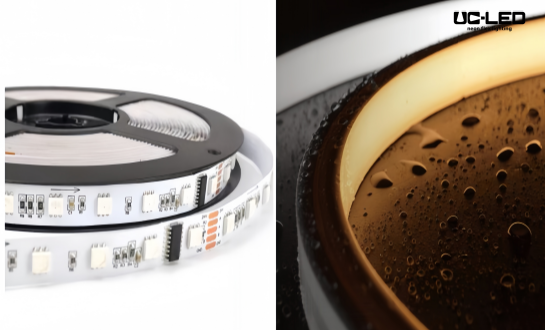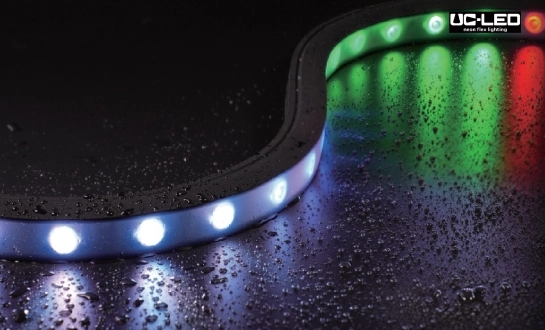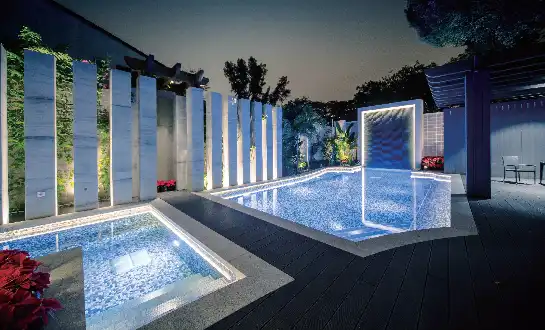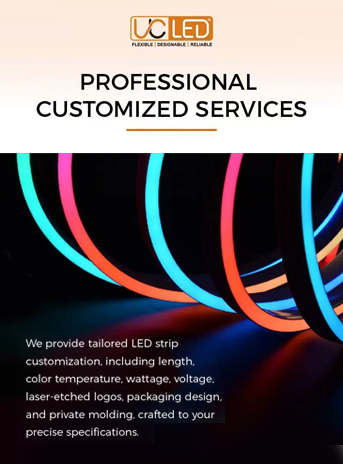Introducing RGBW LED Technology in 360° Neon Flex
RGBW LED technology in 360° Neon Flex represents a significant advancement in lighting solutions. By incorporating a dedicated white LED alongside the traditional red, green, and blue LEDs, RGBW systems offer a more comprehensive and nuanced approach to color mixing. This addition allows for a wider range of color temperatures and enhances the overall light quality.
The Advantages of RGBW in 360° Neon Flex
The inclusion of a white LED in RGBW LED systems brings several benefits to 360° Neon Flex applications. Firstly, it allows for more accurate color reproduction, especially in pastel and neutral tones. The white LED provides a clean, bright base that can be mixed with other colors to achieve precise shades. This precision is particularly valuable in architectural lighting, where color accuracy can significantly impact the ambiance of a space.
Moreover, RGBW technology enhances energy efficiency. When pure white light is needed, the system can utilize the dedicated white LED instead of combining red, green, and blue to produce white light. This approach not only saves energy but also reduces the wear on colored LEDs, potentially extending the lifespan of the lighting system.
Applications and Use Cases for RGBW 360° Neon Flex
RGBW 360° Neon Flex finds its niche in various applications where color quality and versatility are paramount. In retail environments, it can be used to create eye-catching displays that accurately represent product colors. For hospitality settings, RGBW lighting can set the mood, transitioning seamlessly from warm, inviting tones to cool, energizing hues.
In architectural lighting, RGBW 360° Neon Flex can accentuate building features with precise color matching, ensuring that lighting complements rather than clashes with existing color schemes. The technology also excels in creating immersive experiences in entertainment venues, where the ability to produce both vibrant colors and subtle shades is crucial for setting the right atmosphere.
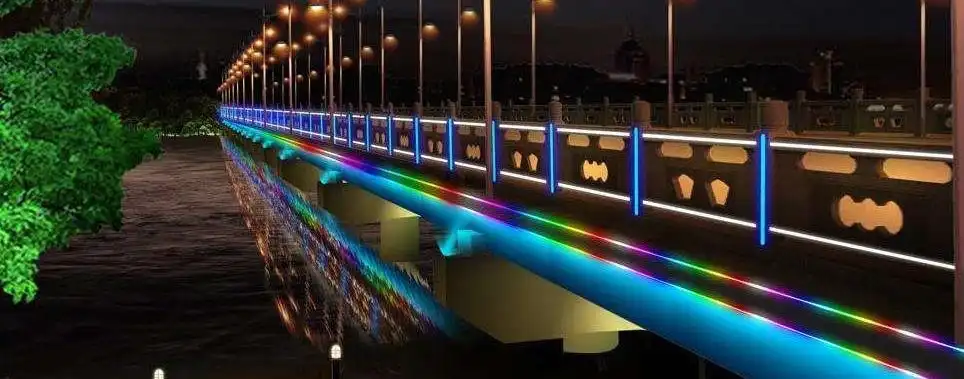
Exploring Pixel-Based 360° Neon Flex Technology
Pixel-based 360° Neon Flex represents a leap forward in LED lighting control and customization. This technology allows for individual control of each LED within the strip, opening up a world of possibilities for creating dynamic and intricate lighting designs. Unlike traditional LED strips where sections of LEDs are controlled as a unit, pixel-based systems offer granular control over every light point.
The Mechanics of Pixel Control in 360° Neon Flex
At the heart of pixel-based 360° Neon Flex is advanced microcontroller technology. Each RGBW LED in the strip is assigned a unique address, allowing it to receive individual commands. This level of control is achieved through specialized protocols such as DMX512 or SPI (Serial Peripheral Interface), which enable rapid and precise communication with each pixel.
The result is a lighting system capable of displaying complex patterns, animations, and even video content. This granular control allows for the creation of smooth color gradients, moving effects, and intricate designs that were previously impossible with traditional LED strips.
Creative Possibilities with Pixel-Based 360° Neon Flex
The creative potential of pixel-based 360° Neon Flex is vast. Designers can create mesmerizing wave effects, scrolling text displays, or even replicate video content across the LED strip. This technology shines in large-scale installations where complex, synchronized lighting effects can create stunning visual spectacles.
In interactive installations, pixel-based systems can respond to external inputs such as sound, motion, or touch, creating dynamic and engaging experiences. For example, a nightclub could feature a pixel-based 360° Neon Flex installation that pulses and changes color in sync with the music, creating an immersive audiovisual experience for patrons.

Comparing RGBW and Pixel Technologies: Making the Right Choice
When deciding between RGBW and Pixel-based 360° Neon Flex, it's essential to consider the specific requirements of your project. Both technologies offer unique advantages, and the best choice depends on factors such as the desired level of control, color accuracy needs, and the complexity of the lighting effects you wish to achieve.
Color Accuracy and Light Quality
RGBW technology excels in producing accurate and high-quality light. The addition of the white LED allows for better color mixing and more precise control over color temperature. This makes RGBW an excellent choice for applications where color fidelity is crucial, such as in retail displays, art galleries, or high-end residential lighting.
Pixel-based systems, while capable of producing a wide range of colors, may not match the color accuracy of RGBW systems in certain scenarios. However, they compensate for this with their ability to create complex color patterns and effects that RGBW systems cannot match.
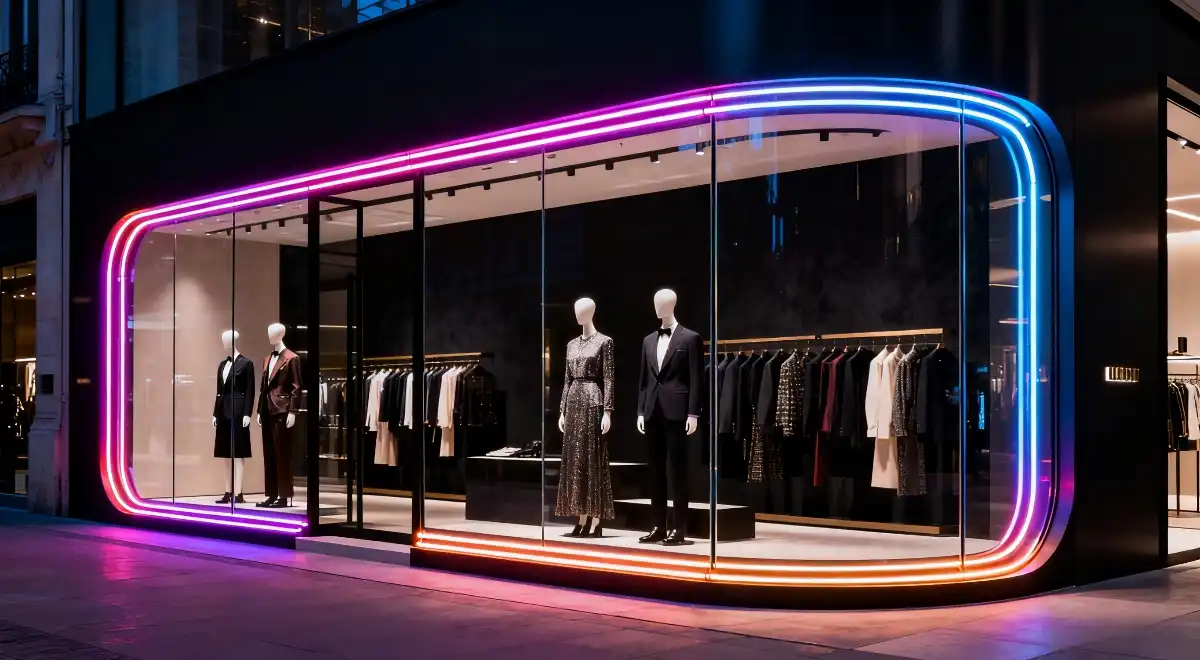
Control and Customization
In terms of control and customization, pixel-based 360° Neon Flex offers unparalleled flexibility. The ability to control each LED individually allows for intricate designs and dynamic effects that are simply not possible with RGBW systems. This makes pixel-based technology ideal for creating eye-catching displays, interactive installations, or any application where complex lighting patterns are desired.
RGBW systems, while not offering the same level of granular control, still provide a high degree of customization. They excel in creating smooth color transitions and can easily produce a wide range of static colors and simple effects.
Energy Efficiency and Maintenance
RGBW systems often have an edge in energy efficiency, particularly when producing white light. The dedicated white LED can produce bright, clean white light without the need to combine multiple colors, potentially reducing power consumption.
Pixel-based systems, due to their more complex control mechanisms, may consume slightly more power. However, the difference is often negligible in small to medium-sized installations. In terms of maintenance, both systems are generally reliable, but the simpler architecture of RGBW LED systems may result in easier troubleshooting and repairs.
Cost Considerations
Generally, RGBW systems tend to be more cost-effective for simpler installations where advanced control is not necessary. The technology is well-established, and components are widely available, often resulting in lower initial costs.
Pixel-based systems, with their advanced control capabilities, typically come at a higher price point. The cost includes not just the LED strip itself, but also the more sophisticated controllers and programming required to utilize the full potential of the system. However, for projects requiring complex lighting effects, the additional cost can be justified by the unique capabilities these systems offer.
Making the Final Decision
Ultimately, the choice between RGBW and Pixel-based 360° Neon Flex depends on your specific project requirements. If color accuracy, energy efficiency, and straightforward control are your priorities, RGBW is likely the better choice. On the other hand, if you need the ability to create complex, dynamic lighting effects or interactive installations, pixel-based technology is the way to go.
For large-scale projects, it's not uncommon to see a combination of both technologies. RGBW strips might be used for general illumination and color-accurate accent lighting, while pixel-based strips are employed for feature areas where dynamic effects are desired.
Conclusion
Both RGBW LED and Pixel-based 360° Neon Flex technologies offer unique advantages in the world of LED lighting. RGBW shines in applications requiring color accuracy and efficient white light production, while pixel-based systems excel in creating dynamic, customizable lighting effects. By understanding the strengths of each technology, you can make an informed decision that best suits your lighting needs.
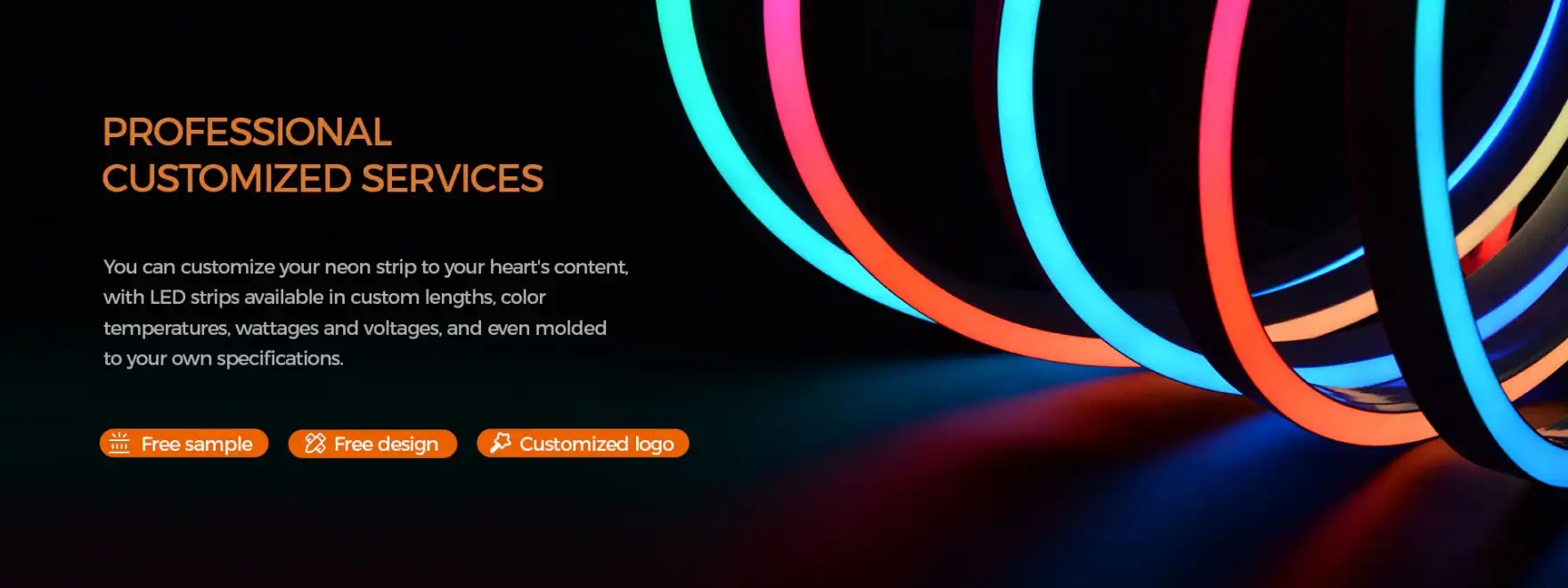
Whether you're illuminating a retail space, designing an interactive art installation, or creating ambiance in a hospitality setting, the right choice of 360° Neon Flex technology can elevate your project to new heights. As LED technology continues to evolve, we can expect even more exciting developments in the field of flexible lighting solutions.
For more information on RGBW and Pixel-based 360° Neon Flex options, or to discuss your specific lighting project needs, don't hesitate to reach out to our team of experts at Linda@uc-led.com. We're here to help you illuminate your vision with the perfect lighting solution.
